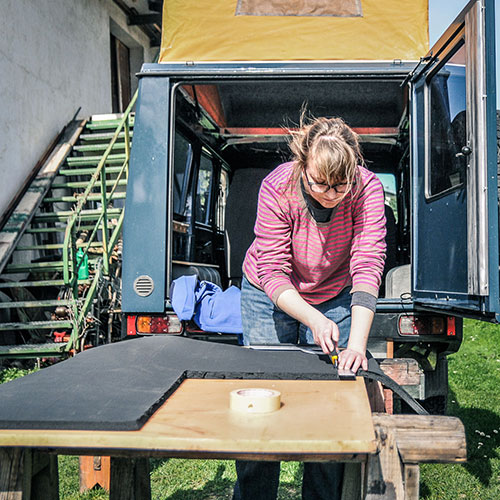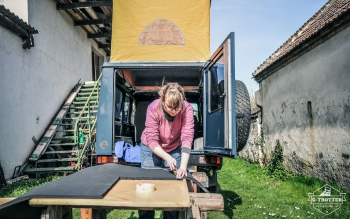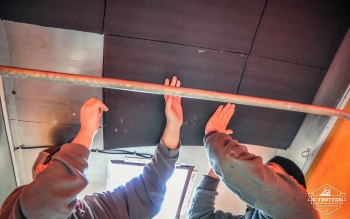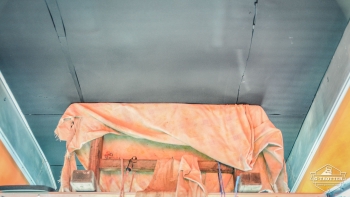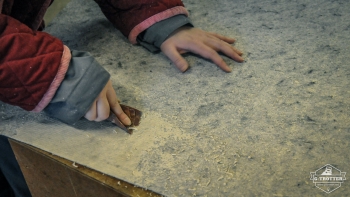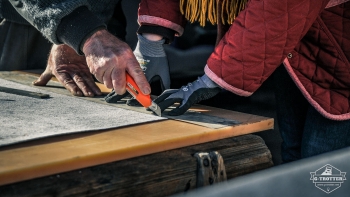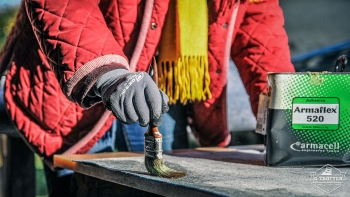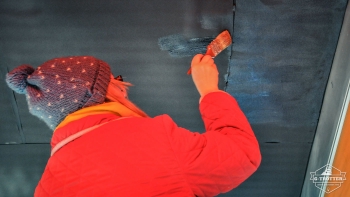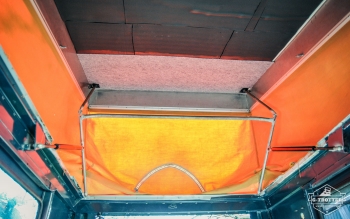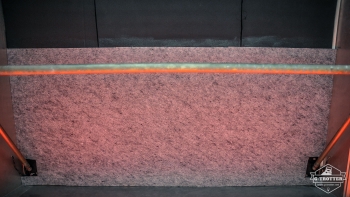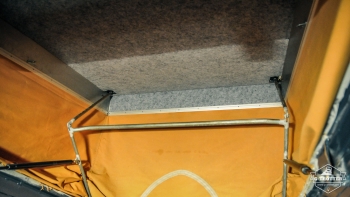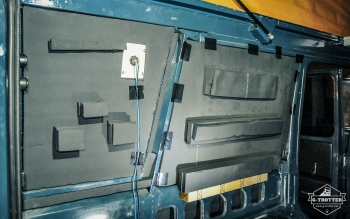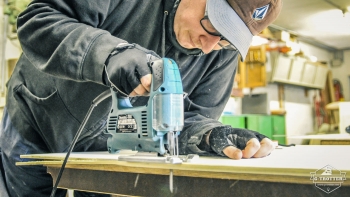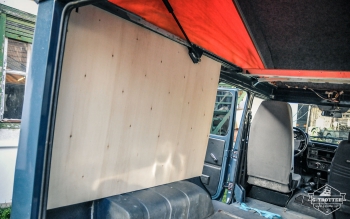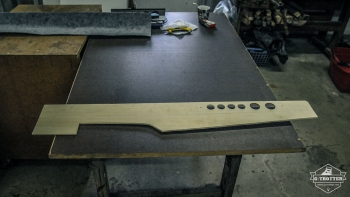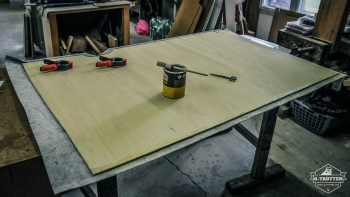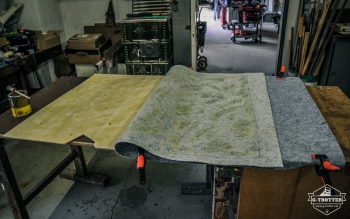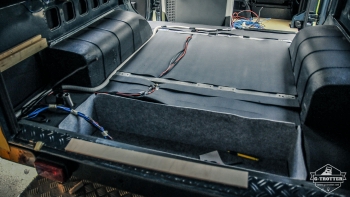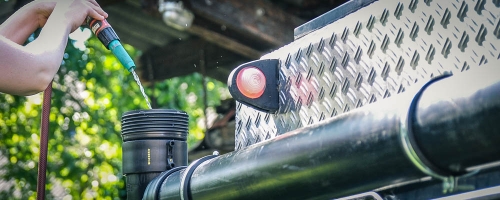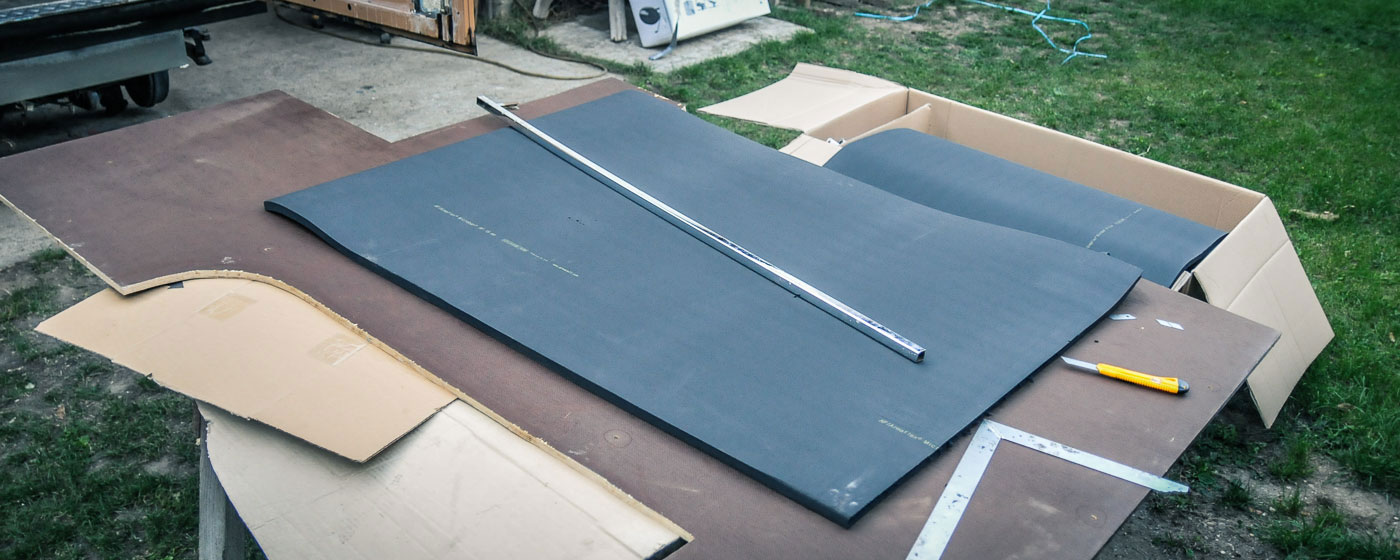
Cutting and glueing - insulation and paneling
Written by am
The necessity of insulating the roof and the walls was beyond all question. The insulation material applied on the walls is hidden behind our self-made paneling.
Since the inside of our pop-up top was made of bare aluminum sheet, it got hot very quickly when under sun exposure (even inside, so that you could have burnt yourself when touching). At the same time, the aluminium was very cold the lower the outside temperature was. It is still a mystery to us how the previous owner(s) were able to sleep underneath that pop-up top since the toes (or even the leg) touch the roof again and again at night. For us, it was beyond all question, that it would be required to insulate it.
After a comprehensive research, the insulation of choice was a 19-mm thick material called “Armaflex”. It is available by meter and can be ordered on Amazon.
Piece by Piece
Working overhead is already a challenge itself, handling large parts of the unruly Armaflex in such a position was impossible. Therefore, we have cut the material in approx. 40x40 cm "tiles" and glued them as such to the ceiling. Like always when working with a "bomb-proof" glue, each piece had to sit at the right place at the first attempt. For us, definitely a challenge.
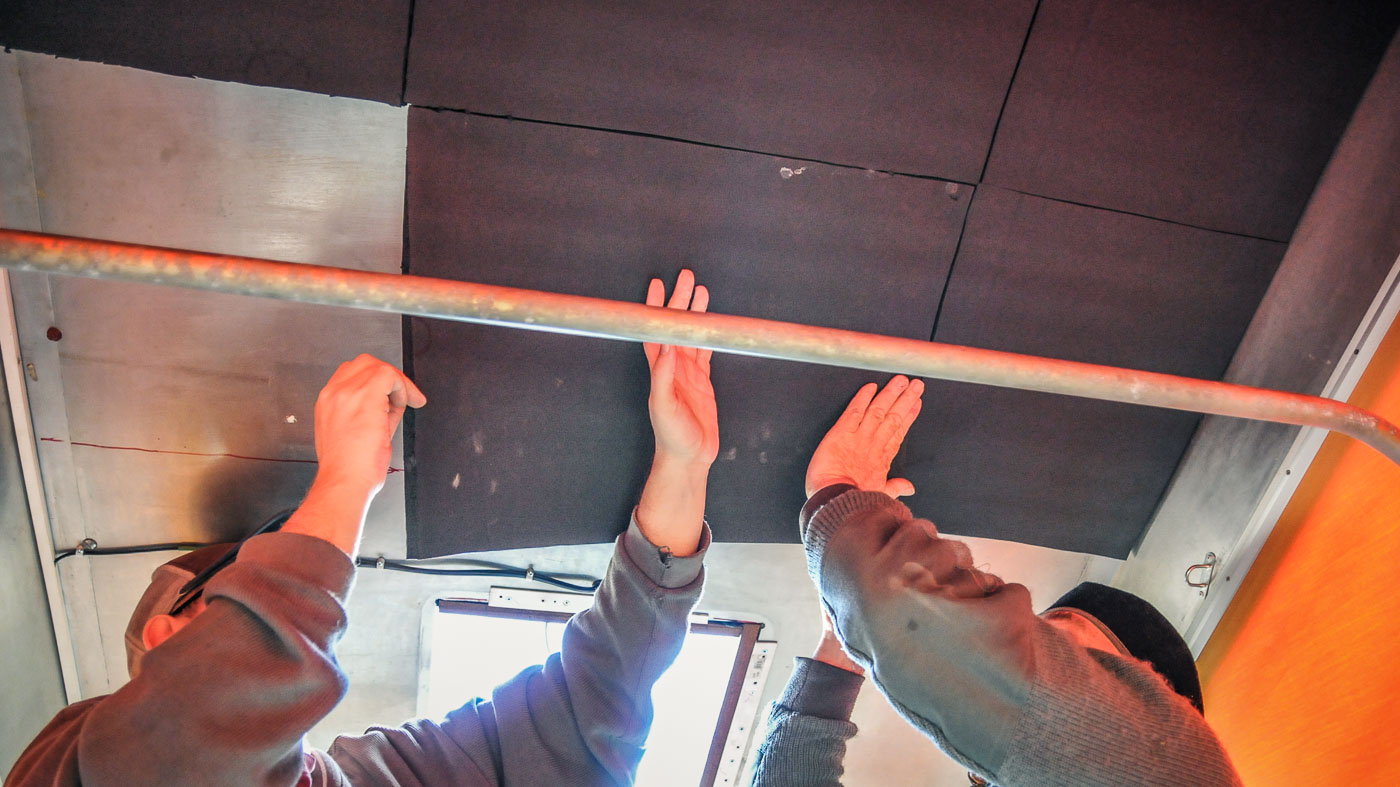 Insulating with Armaflex.
Insulating with Armaflex.On the one hand, because the black armaflex was too dark, on the other hand because it proved to be not very resistant, we decided to cloth it with carpet. This was the first but not the last time we used an inexpensive carpet from the hardware store for the interior of the G. By the way, until now, no part of the insulation has yet fallen on our heads.
Not only the pop-up roof has been insulated with Armaflex, but also the floor and the walls, with the exception of the cockpit.
Paneling of the walls
The wooden floor slab was laid over the insulating material on the floor, while the insulation attached on the walls was hidden away behind 6-mm thick plywood boards. The wooden plates were afterwards clothed with our tried and tested gray carpet. We love how it looks now, and since the original interior trim paneling of the G was either only existent in perforated, damaged or incomplete condition, definitely the right decision.
We had to decide whether we should either cut out or better cover the rear two windows (above the wheel arches) behind the interior paneling. As during planning of the furniture it had emerged that the right window would anyway disappear behind a cupboard, we opted for covering the left window as well. It is correct that with this, we have lost daylight inside the vehicle, but the seat back cushions of the bench are now protruding over more than half of the window, and therewith would have anyway taken away most the incoming daylight.

